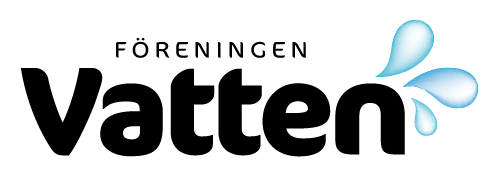FJERNELSE AF KVÆLSTOF FRA REJEKTVAND / Removal of Nitrogen from Sludge Supernatant Liquid
Supernatant liquid from digesting tanks is rich in ammonia. Treatment of supernatant liquid by stripping and absorption was investigated technically and economically under Danish conditions. In a pilot plant, 50 % of the ammonia was removed in one tower. The ammonia was absorbed in sulphuric acid whereby ammonium sulphate was formed. Technical and economical assessments […]
KVÄVEREDUKTION VID AVLOPPSRENINGSVERKET VÄSTRA STRANDEN, EN ENSTAKA KRAFTPRESTATION ELLER EN DEL I EN KOMMUNAL HELHETSINSATS? / Nitrogen Removal at the Sewage Treatment Plant Västra Stranden, a Separate Feat of Strength or a Part of a Municipal Overall Solution?
För att uppnå bättre vattenkvalitet i Laholmsbukten har bl a Halmstads kommun ålagts att under de närmaste åren genomföra miljöförbättrande åtgärder i kommunens avloppsanläggningar, främst inriktade på kvävereduktion, vid tre större avloppsreningsverk. Målet är att minska kväveutsläppen från ca 300 ton/år till ca 120 ton/år. Beräknad kostnad är ca 100 milj kr. Trots denna mycket […]
PROCESSALTERNATIV FÖR KVÄVEREDUKTION – SAMMANFATTANDE RESULTAT AV 2-ÅRIG FÖRSÖKSDRIFT / Process Alternatives for Nitrogen Removal – Concluding Results of 2-Year’s Trial Operation
Trial operation with biological nitrogen removal was started up on July 1, 1989, in an extended activated sludge line at the sewage treatment plant Västra Stranden in Halmstad with financial support of ”New Technics” by Swedish Environmental Protection Agency. The possibilities to increase the nitrogen removal as well as the phosphorus removal have been investigated […]
FÖRSURNING OCH BOTTENFAUNAFÖRÄNDRINGAR I SVERIGE / Acidification and Changes in Bottom Fauna in Sweden
Benthos from lakes and running waters has been used to assess the extent of surface water acidification in Sweden 1969-1991. Altogether 2,861 different waters have been investigated. The acidification status was determined by classifying the different taxa into two groups – acid sensitive, i.e. do not tolerate pH below 5.5 and acid tolerant, i.e. tolerate […]
IS THERE MORE TO ACIDITY IN ORGANIC-RICH SURFACE WATERS THAN AIR POLLUTION? An Example from Northern Sweden,
Current practice in Swedish environmental policy treats most acid surface waters as likely cases of acidification resulting from acid deposition that are suitable objects for liming. That approach to the management of acidity in surface waters is based largely on the understanding of surface water acidification in the clear water lakes and streams of southern […]
MARKFÖRSURNING OCH KOPPLINGEN TILL YTVATTENKVALITET / Soil Acidification and its Relation to Surface Water Quality
Soil acidification has not as yet been observed in upper Norrland. Possibly the investigations mostly carried out in well drained soils may not be relevant however as an early stage of surface water acidification should concern the discharge zones. In these zones the flow is channelled to restricted soil volumes both depthwise and sideways. This […]
ACIDIFICATION OF RIVERS IN NORTHERN SWEDEN DURING A 25-YEAR PERIOD
Scandinavian freshwater acidification was observed at the end of the nineteen sixties and was thought to be a result of the observed pH-decreasing in the precipition over north-western and northern Europe (Oden and Ahl 1970). These results were obtained from the monitoring of the water quality in the Swedish rivers started in 1965 and a […]
ACIDIFICATION OF SURFACE WATERS IN NORTHERN SWEDEN CURRENT STATUS – FUTURE – COUNTERMEASURES
Recent studies show that anthropogenic acid surges provide the major acidification problem for lakes and watercourses in northern Sweden. Anthropogenic acid episodes may occur in around 20-40 % of all watercourses and in around 15-30 % of all lakes. Anthropogenic acidification throughout the year is a lesser problem. Predictions for the future using mathematical models […]
STREAMS IN THE AGRICULTURAL LANDSCAPE?
In southern Sweden, changes in agricultural practices have affected the streamland interface increasing nutrient transport to the sea. Results from ongoing studies suggest that these areas surrounding Scanian streams are important in nutrient removal. In artificially induced surface runoff through a riparian buffer strip, 66 % of the PO4-P was retained during the first 8 […]
DIKVÄVEOXIDPRODUKTION OCH EMISSION FRÅN VÅTMARKER, Nitrous Oxide Production and Emission
The concentration of nitrous oxide in the atmosphere increases with 0.25 % per year. Nitrous oxide degrades ozone and it also increases the green-house effect. Many biological processes can produce nitrous oxide. The three most important processes are nitrification, denitrification and dissimilatory ammonium production. These biological processes are of importance in development of systems for […]
